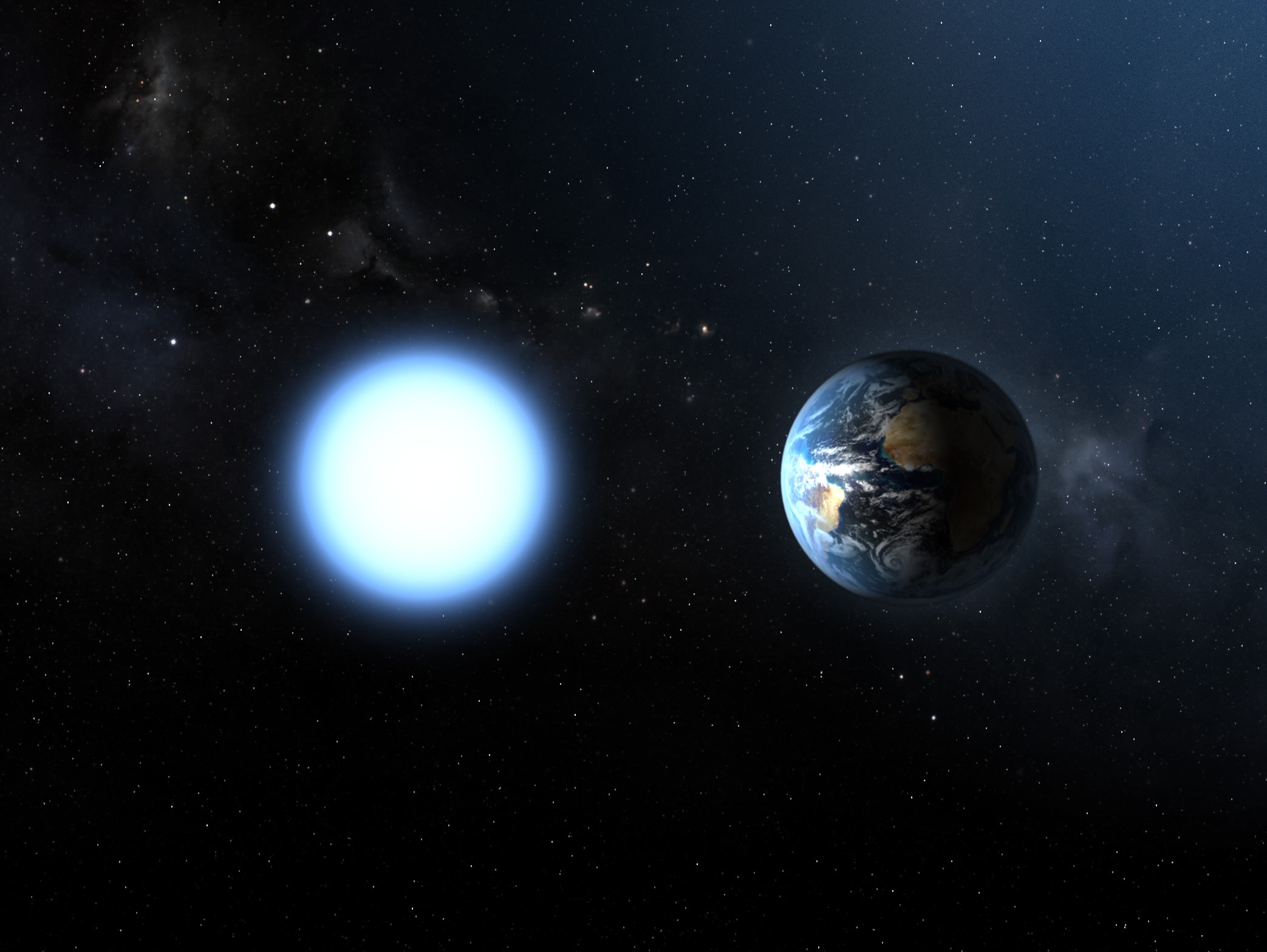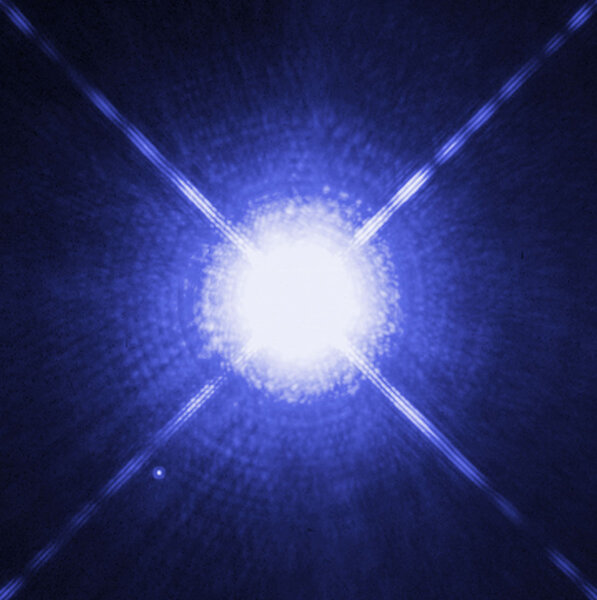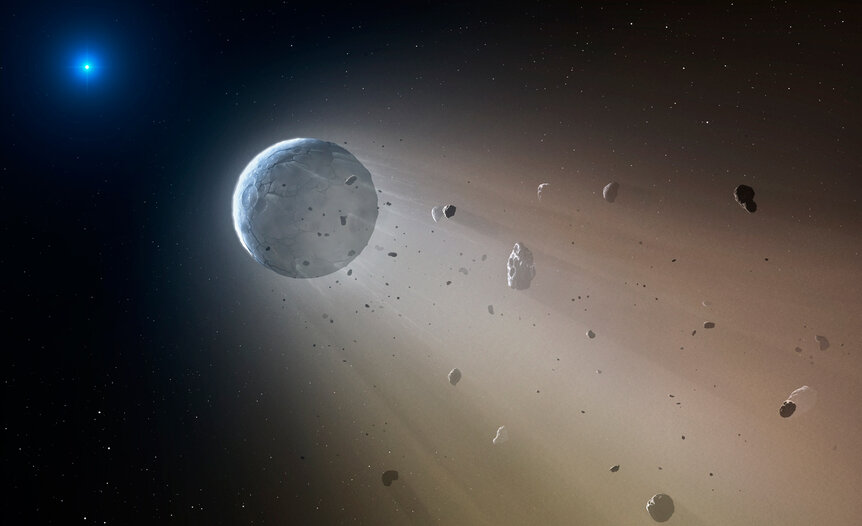Create a free profile to get unlimited access to exclusive videos, sweepstakes, and more!
No planets seen for Sirius B, the nearest white dwarf to Earth
It may have eaten them long ago.

Well, this is a bummer: It looks like Sirius B doesn’t have any extant jovian gas giant planets.
Sirius B is the closest white dwarf to Earth, the leftover innards of a star like the Sun after it goes all red giant, blows off its outer layers, and reveals its dense core to space. And I do mean dense; Sirius B has the mass of the Sun packed into a ball about the same size as Earth.
It orbits the primary star Sirius A — the brightest star in our nighttime sky — on a decently elliptical path that takes them from 1.2 to as much as 4.5 billion kilometers apart every 50 years. They’re about 8.8 light-years from Earth, among the closest stars to us in the Universe.
Because of the gravitational influence of the primary, which has twice the mass of the Sun, no planet would be able to remain in orbit around the white dwarf farther than about 1.5 times the Earth-Sun distance, so about 230 million kilometers. Anything farther out will get eventually tossed by the gravity of the primary.
Still, there could be planets closer in than that limit. So a team of astronomers used the massive 10-meter Keck telescope in Hawai’i to take several observations of the diminutive dead star Sirius B at three different times in 2020 [link to paper]. This is actually a difficult prospect given the terrifically bright Sirius A just a few arcseconds away (that’s very close). Still, they did get a series of good observations.
To look for planets, they did what’s called angular differential imaging: In essence, you take two images taken at different times, center the image of the star as accurately as possible, rotate one image around the star center relative to the other image, then subtract the second image from the first. If this is done well, the star will disappear, or close enough. Any planets, though, would appear farther out from the star center as a bright dot next to a dark spot in the image because rotating the image moves the planet in the image.
It’s actually a lot more complicated than this, and there are lots of ways to implement it; I’ve done it myself with Hubble observations by literally rolling the telescope into a different altitude to get two images of a star.
Anyway, in the end they were able to show that any planet more massive than 1.6 – 2.4 times that of Jupiter would have been visible in their data out to about 75 million kilometers from the star, and 0.7 – 1.4 greater than a distance of 150 million kilometers (bigger planets reflect more light and are brighter and easier to see closer to the bright star).
While a bit of a bummer, this doesn’t mean there are no planets there, just none bigger than those limits at those distances. There could be smaller ones lurking there. Maybe.
It’s weird but possible for white dwarfs to have planets. Just a couple of years ago the white dwarf WD 1856+354 was found to have a Jupiter-sized planet orbiting it, which means the planet is bigger than the host star! So we know it can happen.
There’s more evidence they can host planets, too, at least before they turned into a white dwarf. We have lots of observations of white dwarfs where the inner planets were torn apart and the pieces fell onto the star; in fact you can argue — because it’s true — that the very first evidence of an exoplanet was in a spectrum of a white dwarf taken in 1917! That’s one of my favorite stories: spectra show calcium, iron, and magnesium, elements that should sink very rapidly into the star’s fluid interior. But they were there because the star recently tore apart and ate a rocky planet, and there hasn’t been enough time for them to sink yet. Very cool.
There’s no evidence of this happening with Sirius B, though. Also when it became a red giant millions of years ago, it likely would’ve consumed any planet less than 230 million kilometers out — red giants get much larger than that — so perhaps we shouldn’t expect to find planets orbiting it. While it’s true that some planets in general can survive their host star’s red giant phase, they’d have to be relatively far out, and Sirius A prevents that there.
Still, nature is smarter than we are, and maybe knows a way to spare planets that fate in a way we haven’t thought of. So it’s best to check. Surprises abound in the sky, and we won’t find them if we don’t look.




























